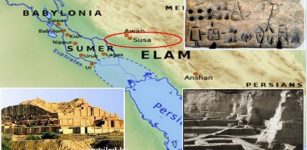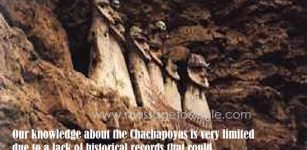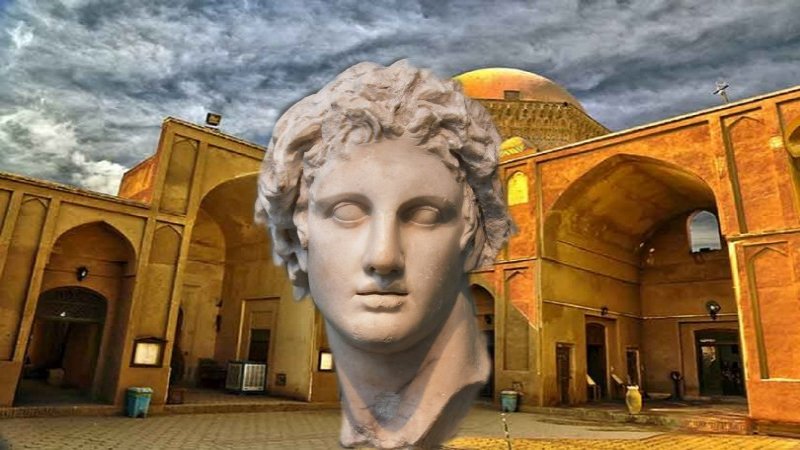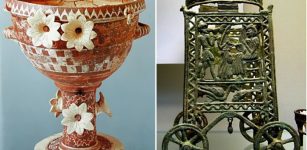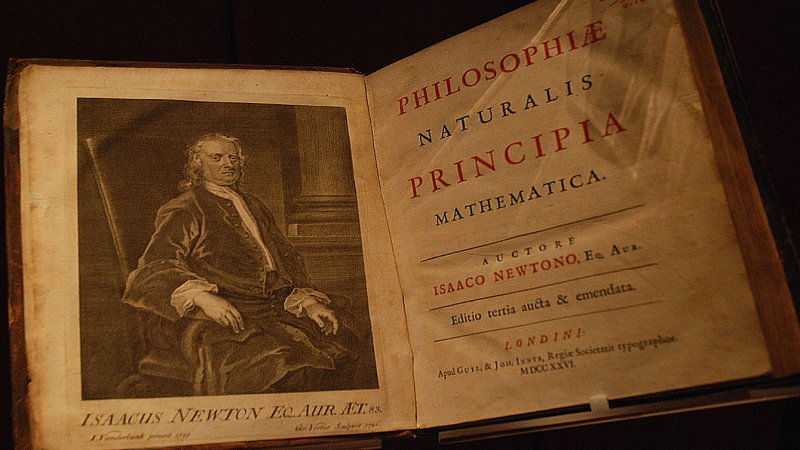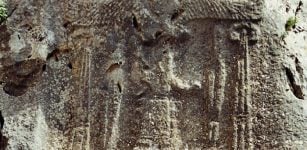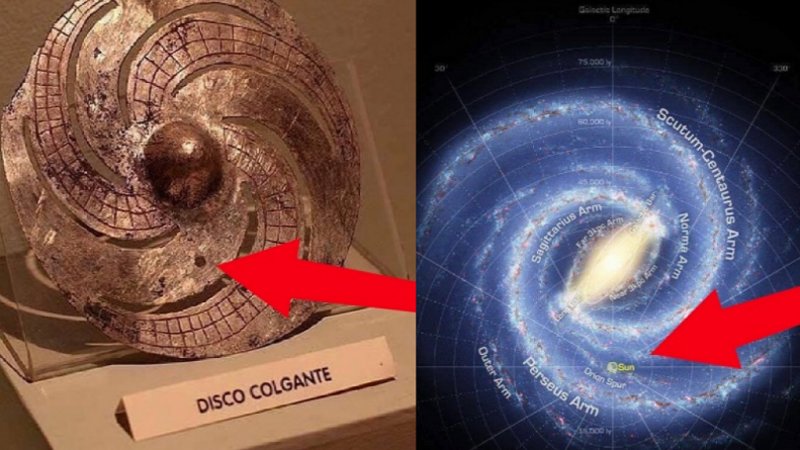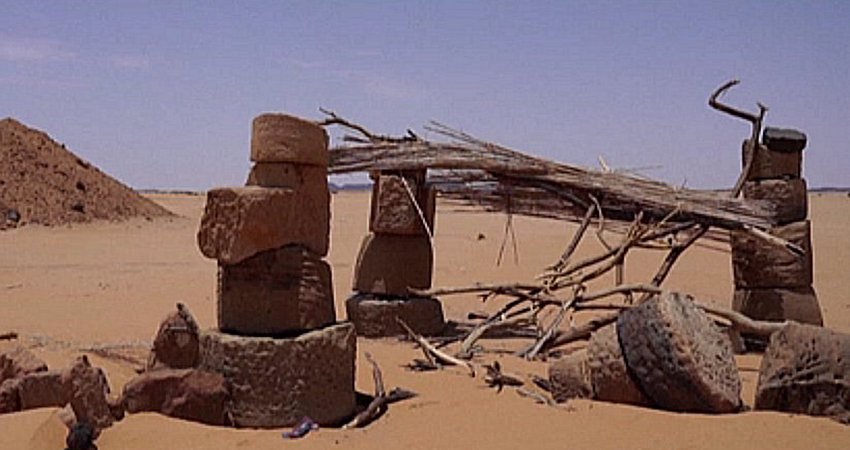Yggdrasil: Eternal And Sacred Tree Of Life In Norse Mythology
MessageToEagle.com – The tree of life is mentioned in many of the world’s ancient myths and legends.
In Norse mythology it is called Yggdrasil and it is an eternal and sacred Ash tree with branches that stretch out to harbor nine worlds. It is has three roots and each one reaches to a different mysterious world. The first root is connected with Asgard, the ancient kingdom of the powerful Norse gods.
The second root goes all the way to Jötunheimr, the home of the fearful giants and the third root stretches to Nilfheim, a place shrouded in primordial darkness, cold, mist, and ice.
In each of the worlds there is a sacred well. In Asgard stands Urd’s well and this is where the gods hold their daily meetings. In Jötumheimr stands Mimir’s well (Mímisbrunnr) that is associated with Mimir, the Norse god of wisdom. It is said that the great god Odin sacrificed an eye to Mimir in exchange for a drink from Mimir’s well. In Nilfheim is a well called Hvergelmir from which many rivers flow.
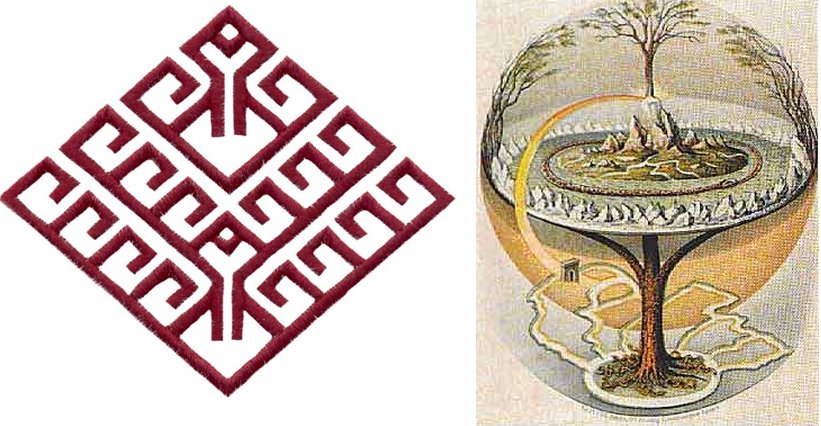
Right: An 1847 depiction of the Norse Yggdrasil as described in the Icelandic Prose Edda. By Oluf Olufsen Bagge
In Old Norse, Yggdrasil is called Mimameidr. This giant tree supports the Universe. How Yggdrasil came to existence is not entirely clear, but according to most Norse mythology researchers the sacred Tree of Life grew out of a well called Urd.
The name itself comes from Yggr, meaning “ The Terrible One”, a name frequently given to Norse god Odin. For the well, the name “Urd” meant “destiny.” Both names can be linked to the Norsemens’ concepts of time. The Well of Urd depicts a “reservoir of completed or ongoing actions that nourish the tree and influence its growth. Yggdrasil, in turn, corresponds to the present tense, that which is being actualized here and now.
See also:
Was The Legendary Tree Of Life Located In The Grove Of Eridu?
Mysterious And Powerful Valkyries In Norse Mythology: The Choosers Of The Slain
Goddess Idun And The Golden Apple Myth In Norse Mythology
More Fascinaing Myths And Legends From All Across The World
The flow of time in Norse mythology was not linear, but cyclical. The growth of Yggdrasil depended on how the waters of the past seep into the tree, affecting its form. Eventually, this water gathers on the leaves, like the dew, and runs back into the well, thus creating a new present. Those who gained control over this flow were said to possess great magic, because they displayed “a greater degree of control over destiny.
In Norse philosophy, the power of free will and fate interact, and give birth to reality.
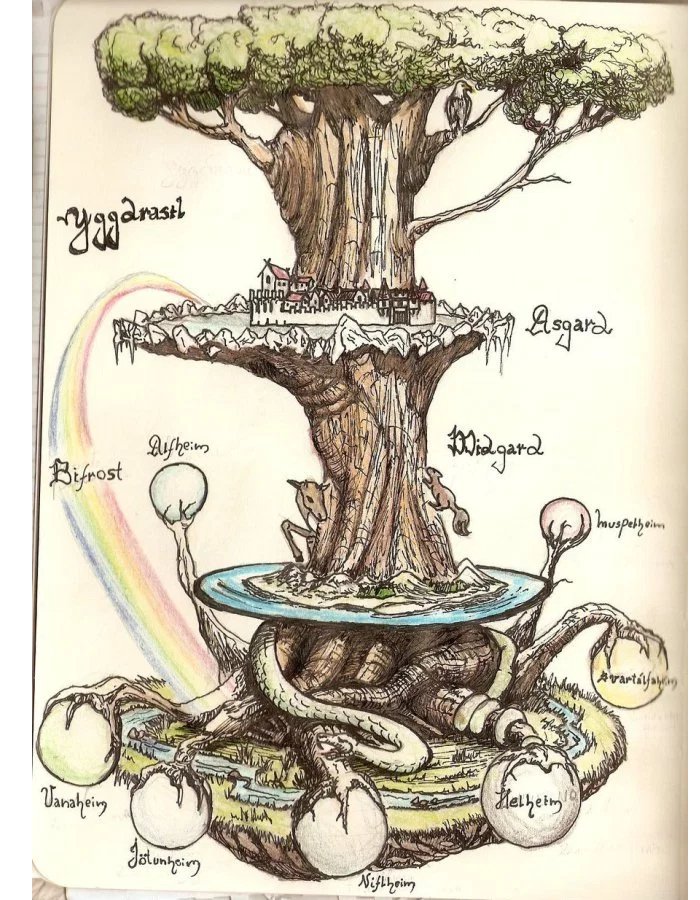
Many different creatures lived in Yggdrasil. At the very top of Yggdrasil, an eagle lived and at the bottom of the tree lived a dragon named Nidhug. Both hated each other and were bitter enemies. The Nine Worlds are guarded by the serpent Jormungandr. Yggdrasil is one of many variations of the Cosmic Axis or Universal World Tree known to all human cultures and home to many fascinating creatures.
Yggdrasil is mentioned in two books in the Prose Edda; Gylfaginning and Skáldskaparmál. When Gangleri, the earliest recorded king in Scandinavia asks about the location of holiest place of the gods, he is told it is the ash Yggdrasil. There the gods must hold their courts each day.
In the Well of Urd live the Norns, three wise women and shapers of destiny who recorded days in a person’s life. The Well of Urd (Well of Destiny) plays a central role in the image of Yggdrasil. The Well of Urd and its waters nourish the tree and the water cycle expresses a circular passage of time. The well, which corresponds to the past, influences the growth of the tree, which corresponds to the present. However, unlike in our modern, linear conception of time, the present then returns to the past even retroactively changing it!
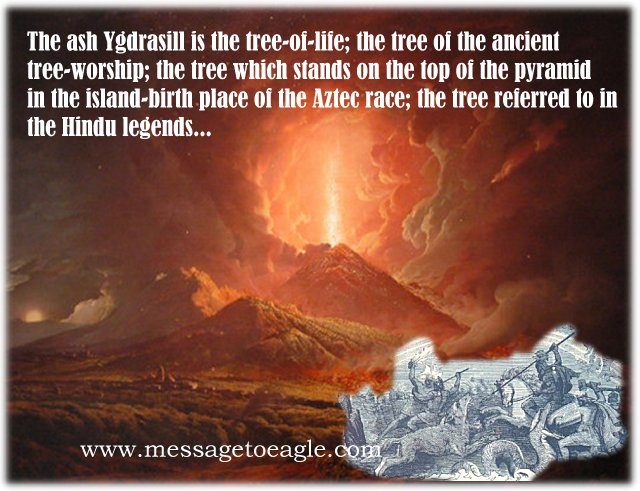
After Ragnarök , the Doom of the Gods and apocalyptic record of the coming comet, the world tree, though badly shaken, will to be the source of new life. Two humans, Líf and Lífðrásir, who hid themselves deep within Yggdrasil, will see light. With the rebirth of the world after Ragnarök, the golden age of the Norse gods will return.
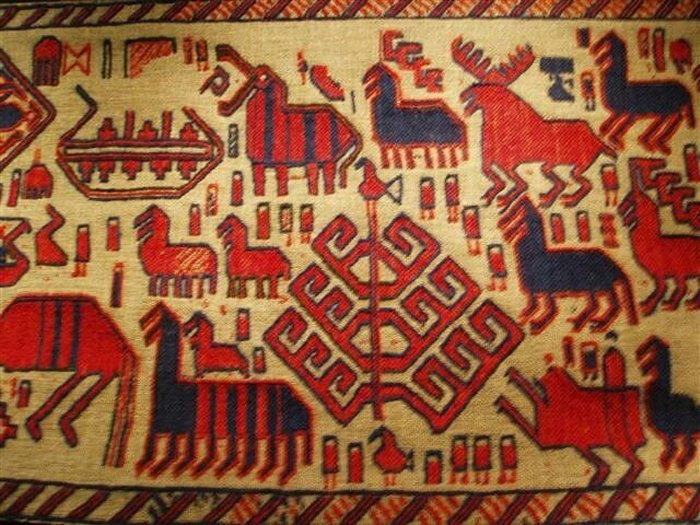
The image of Yggdrasil appears on the famous Överhogdal Tapestry, which dates to the year 1066 and depicts the events of Ragnarok, the doom of the Gods and apocalyptic record of the coming comet.
Copyright © MessageToEagle.com. All rights reserved. This material may not be published, broadcast, rewritten or redistributed in whole or part without the express written permission of MessageToEagle.com

